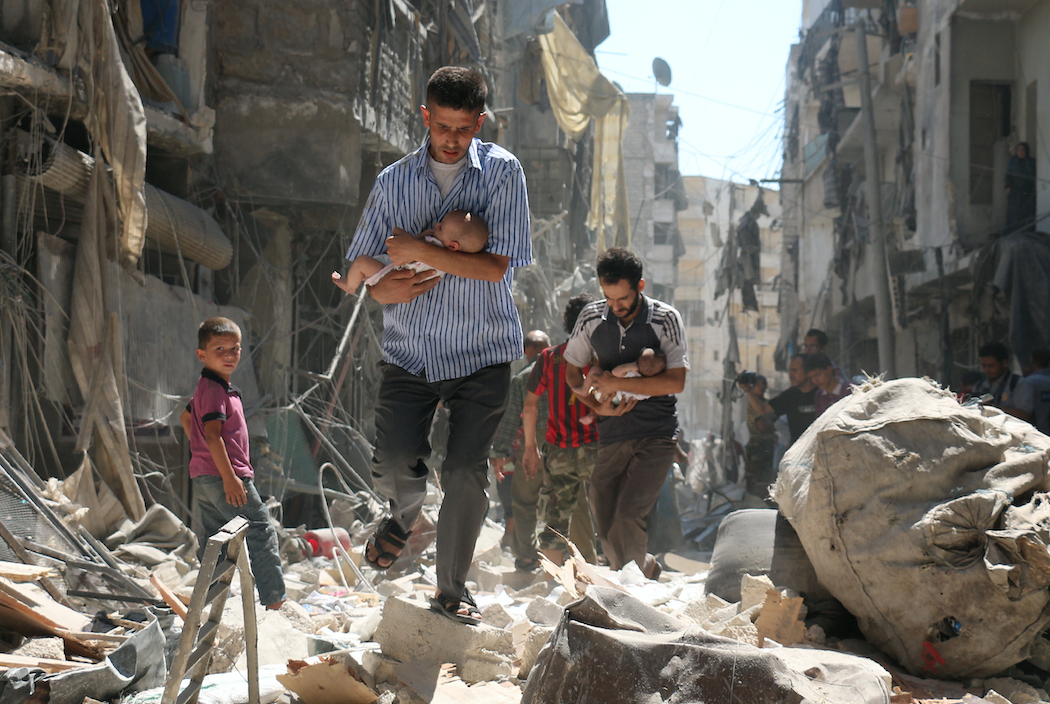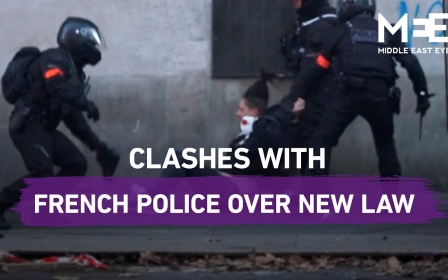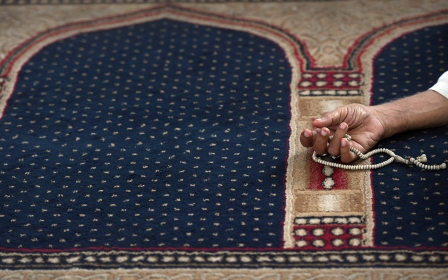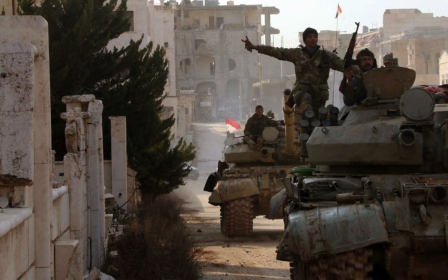France protests: Injured Syrian photographer recounts police violence in Paris
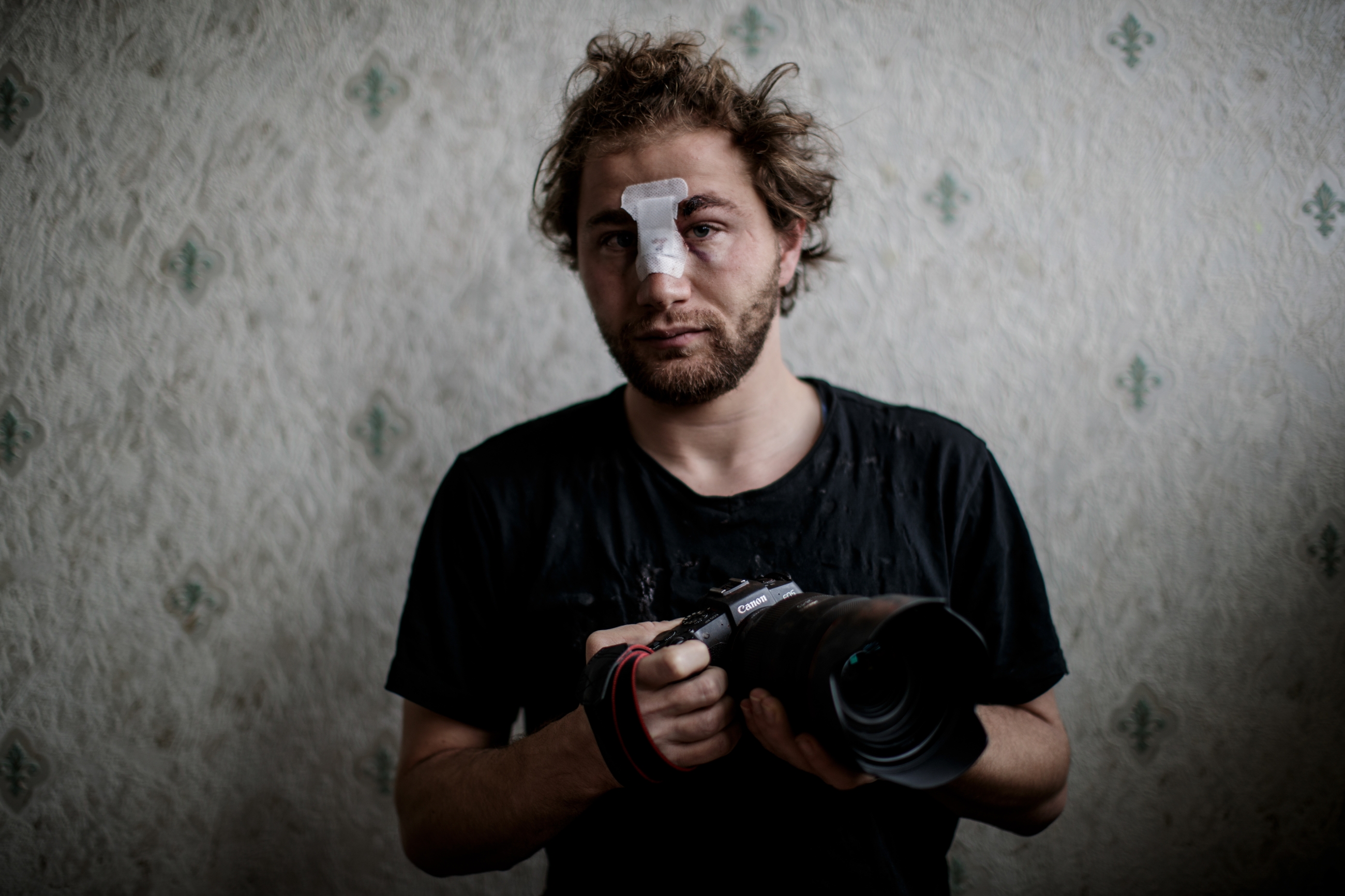
Pain breaks through the smile that Ameer al-Halbi tries to maintain while speaking with Middle East Eye.
"At this point, I still don't know if I'm going to file a complaint. I need to rest, I'm exhausted."
On 28 November, the Syrian photographer went to a rally against the so-called "global security" bill in Paris with colleagues and friends, as he does at every other protest. At the end of the day, violent clashes erupted between French police forces and protesters in the capital's Bastille Square.
Halbi was taking pictures when he was cornered by riot police officers who were charging at demonstrators. Baton blows rained down on him and injured his face. He was covered in blood.
Voluntary medics who routinely operate during demonstrations rushed to provide first aid, but they were blocked for two hours in the Bastille Square before being able to take Halbi to hospital.
New MEE newsletter: Jerusalem Dispatch
Sign up to get the latest insights and analysis on Israel-Palestine, alongside Turkey Unpacked and other MEE newsletters
"I bought a helmet and a gas mask to protect myself, but the police seized them during a Yellow Vests demonstration last year," Halbi told MEE. "I don't have enough money to buy new ones. Until last Saturday's incident, I didn't believe that this could ever happen in France. We're so far from Syria... "
The young man, aged 24, must undergo further medical examinations. "I have a broken nose, but it's mostly psychological trauma."
Two bullets in the hands
The worst thing for Halbi was the wait. He recalls the day he was wounded in his hometown of Aleppo in northwestern Syria in 2011. He was 15 years old at the time.
"I was shot twice in the hands," he tells MEE. "Since Saturday, I've been constantly reliving that day, I've been re-envisioning that nightmare. I hardly sleep anymore."
At that time, inhabitants of Aleppo had quickly joined the ranks of the then-peaceful insurgency which had only just begun in Syria. But Syrian government forces were already shooting at demonstrators to both scare them and put a stop to the protest movement. The repression quickly escalated, and a full-scale civil war erupted, which continues to this day.
A few hours after pictures showing Halbi's bleeding face spread on social media, an administrative investigation was opened by French police to determine how the journalist was injured.
AFP, which Halbi regularly works for, has also demanded an investigation into the incident. In a statement, the news agency stated that Halbi "was exercising his legal right as a photojournalist covering demonstrations in the streets of Paris" and that he "was with a group of colleagues clearly identified as journalists".
Translation: Present at his side, independent photojournalist Gabrielle Cezard says she lost sight of (Halbi) during a police charge in a small street. "We were identifiable as photographers and all pinned to a wall. We shouted 'Press! Press!' There were projectiles thrown by protesters. Then police charged, batons in hand," she told AFP.
The Syrian photographer came to France in the spring of 2017, a few months after leaving besieged Aleppo with his mother and sister in a green government bus.
In December 2016, after an agreement between the rebels and the Syrian government, authorities committed to setting up an evacuation programme for civilians who were trapped in the last opposition stronghold of the city.
Halbi's pictures of the battle of Aleppo have earned him several prestigious photography awards, including the second prize in the Spot News category of the 2017 World Press Photo awards.
He also won the "Gaze of Youth" award in the category for 15-year-olds in the Bayeux War Correspondents' Prize that same year for an image showing two men each holding an infant in their arms and walking down an Aleppan street in ruins.
Another one of his famous pictures shows a White Helmet handing out balloons to children. This one was taken by his father, shortly before he was killed in a bombing raid by pro-government forces.
As a child, Halbi wanted to be a footballer. But the war decided otherwise for him. He delved into photography. Day after day, he documented the war, the bodies, the dead, but above all the stories.
"It helped me to face hell on earth. I had to confront my fears. Photography has always been a passion and has always fascinated me."
When he began selling pictures to AFP, he chose a pseudonym: "Ameer is the first name of a great friend who died to protect me from the regime."
The young blonde man with blue eyes who was constantly smiling became serious, almost sad.
Today, Ameer has no intention of changing jobs, but he needs time before to process why this much violence was inflicted on him in the so-called "country of human rights" where he has sought refuge.
This is an edited translation of an article is available on Middle East Eye's French edition.
Middle East Eye delivers independent and unrivalled coverage and analysis of the Middle East, North Africa and beyond. To learn more about republishing this content and the associated fees, please fill out this form. More about MEE can be found here.



